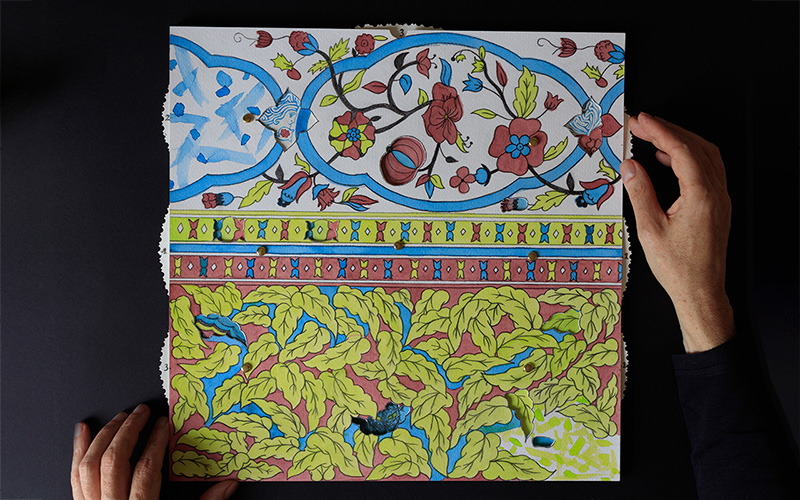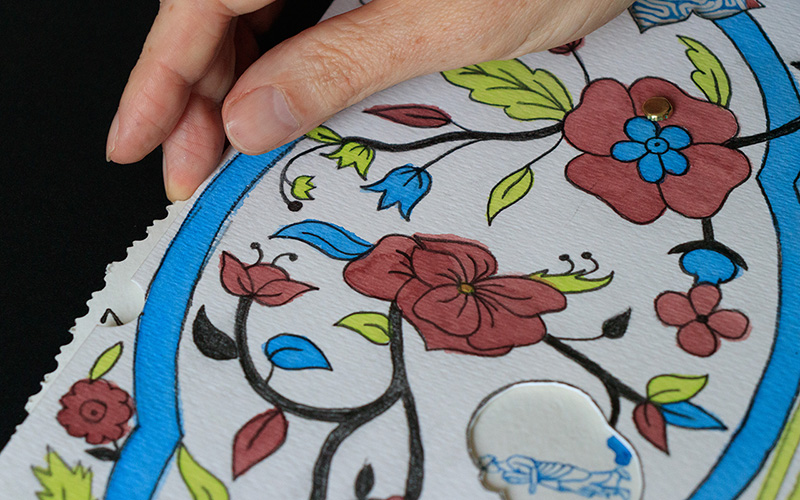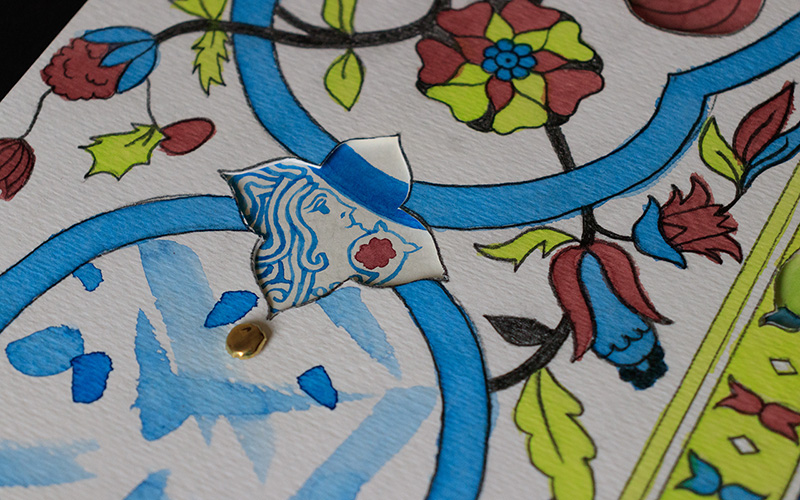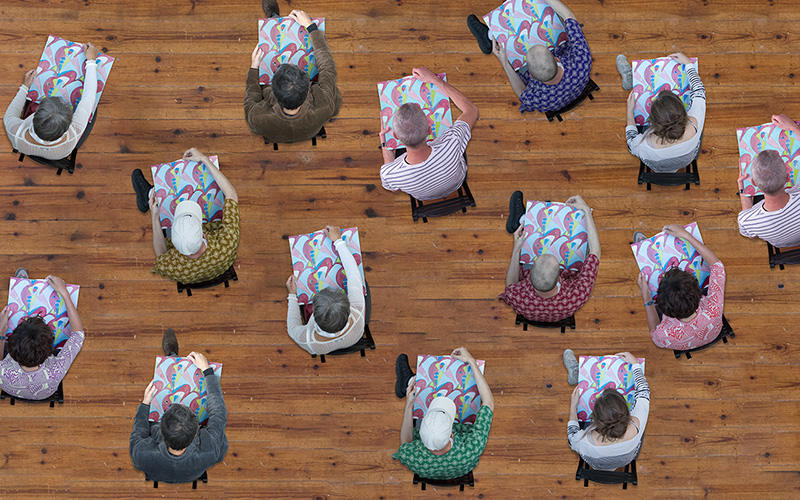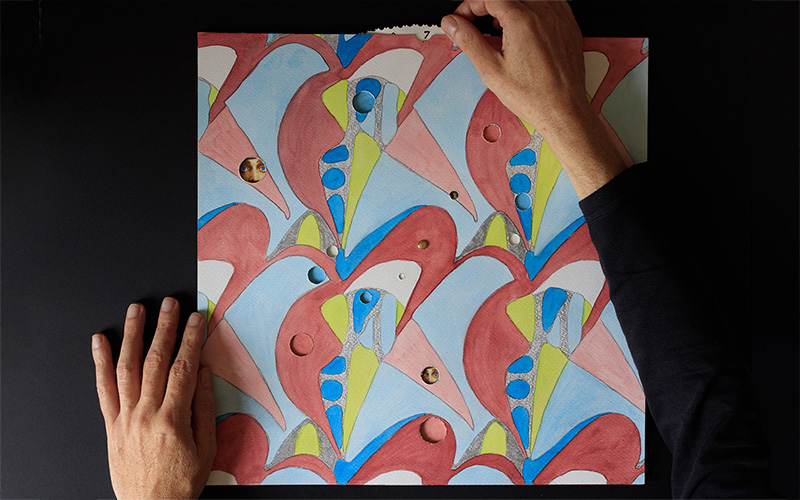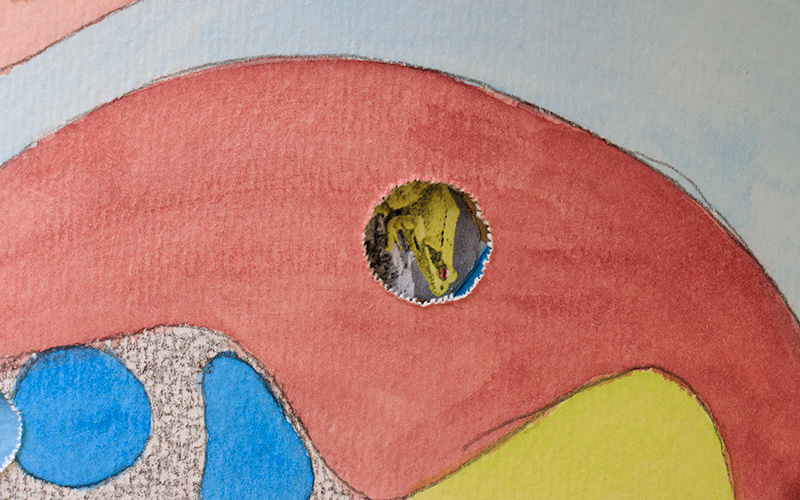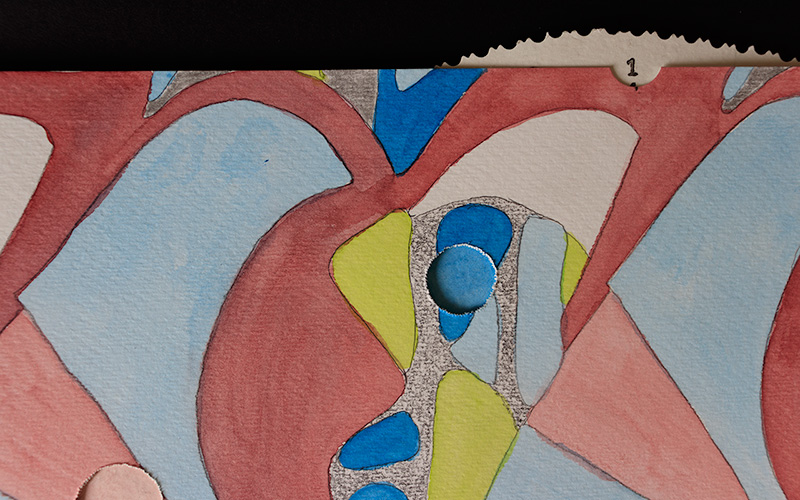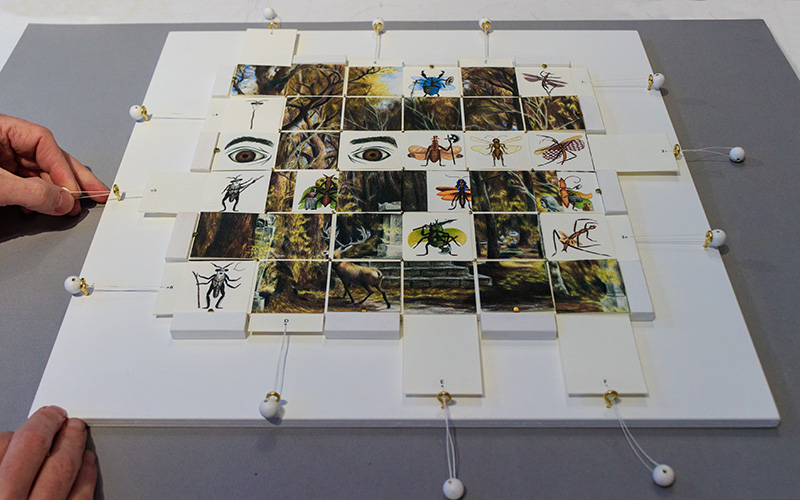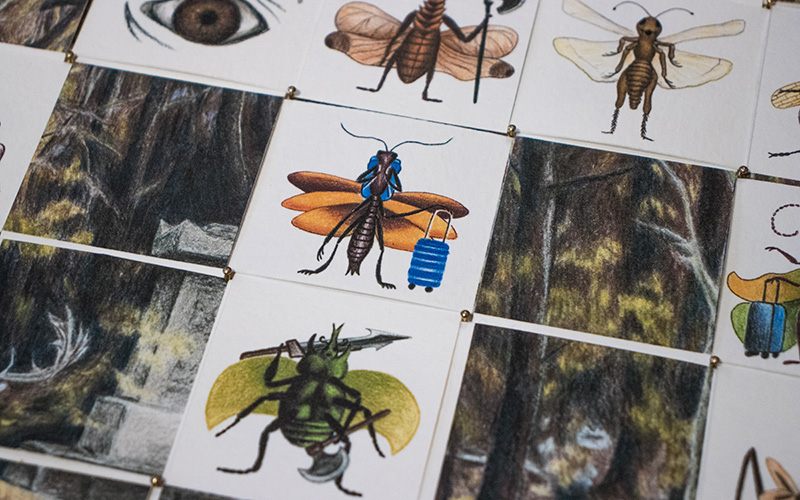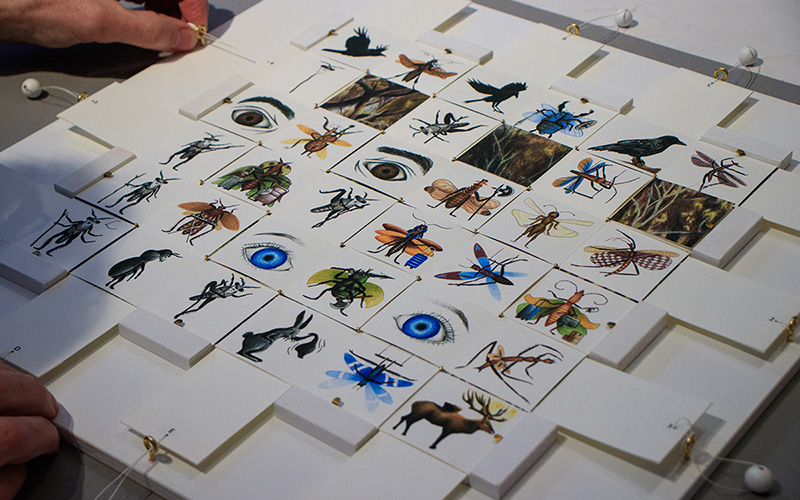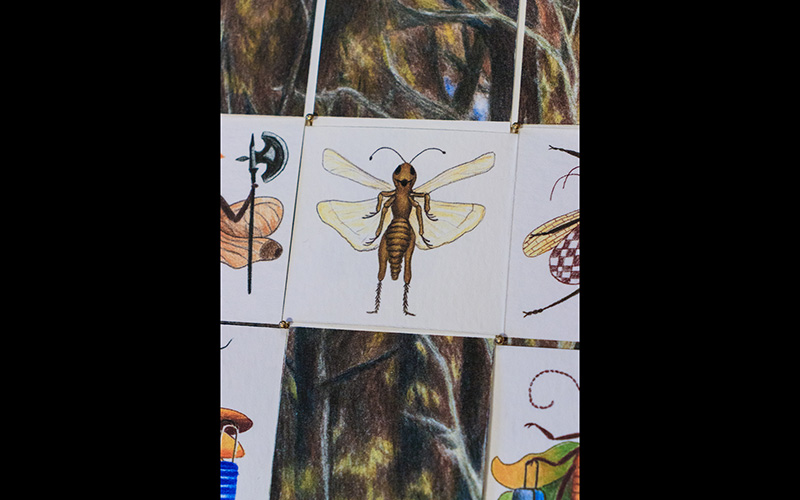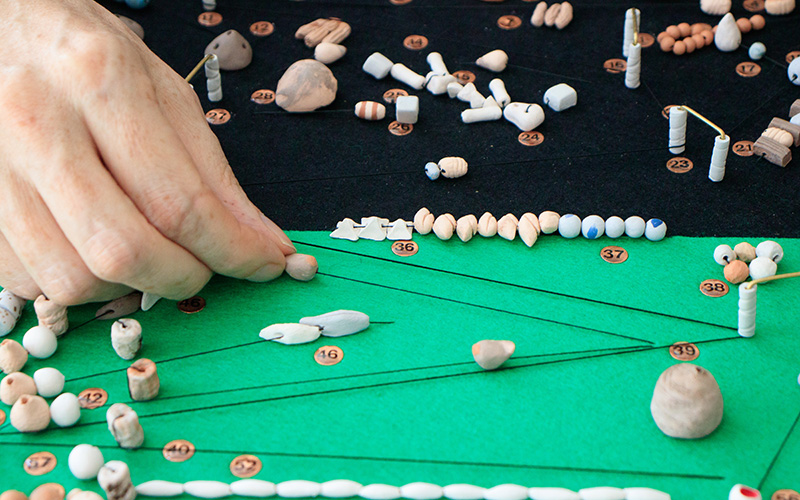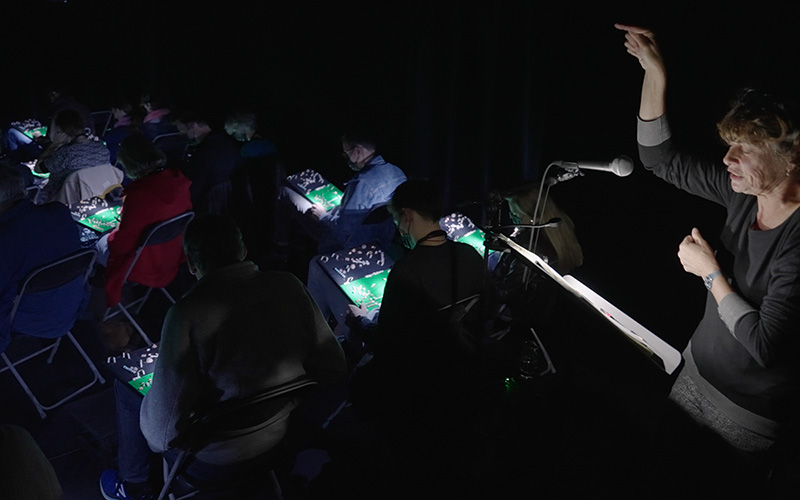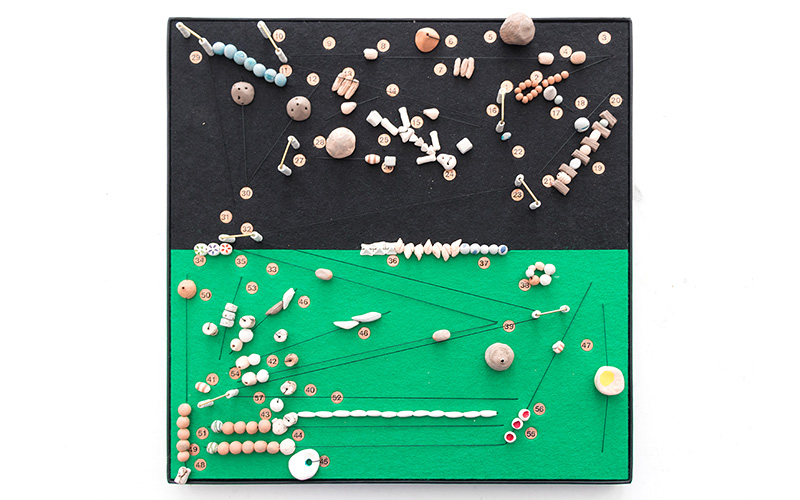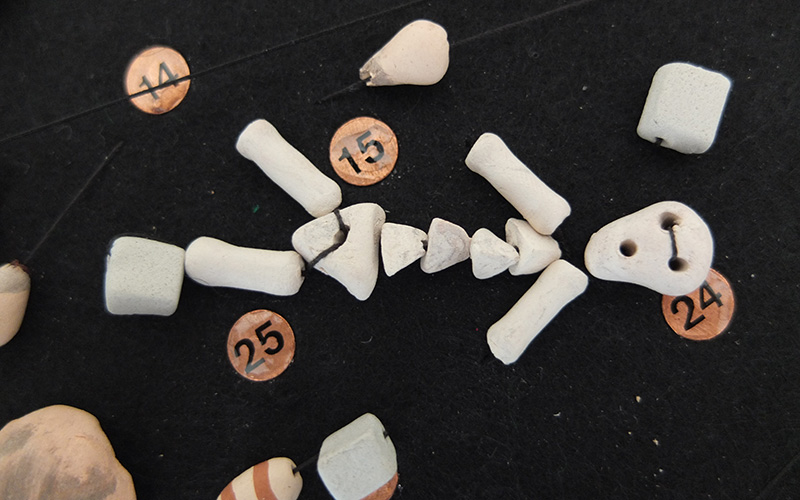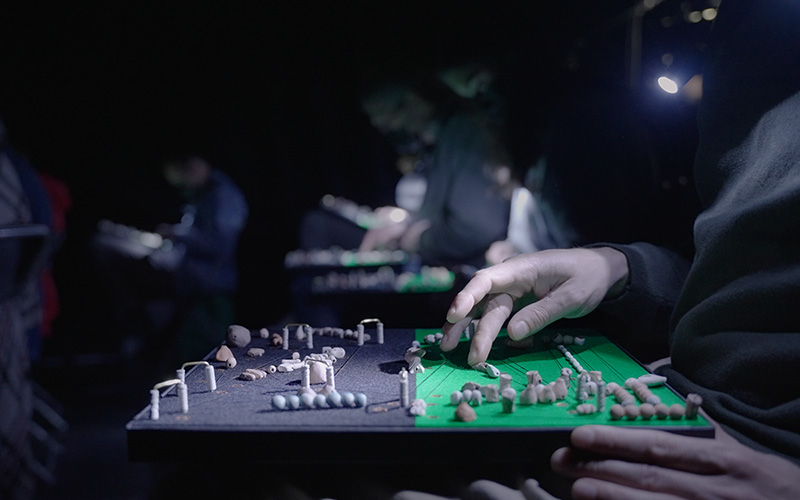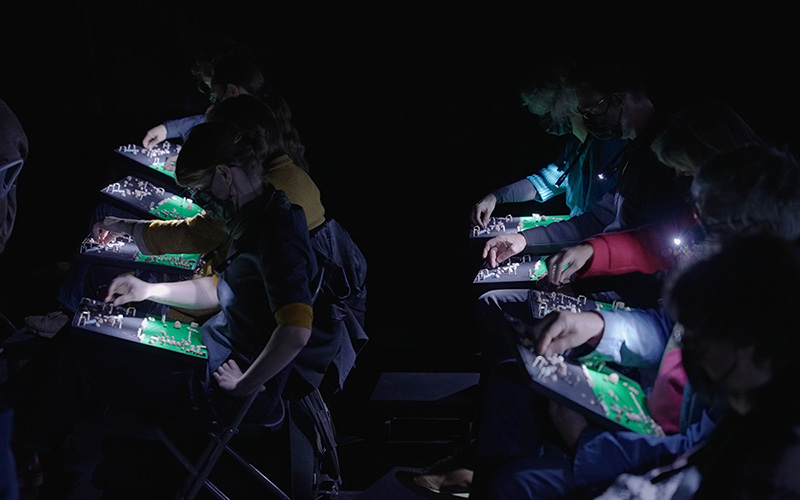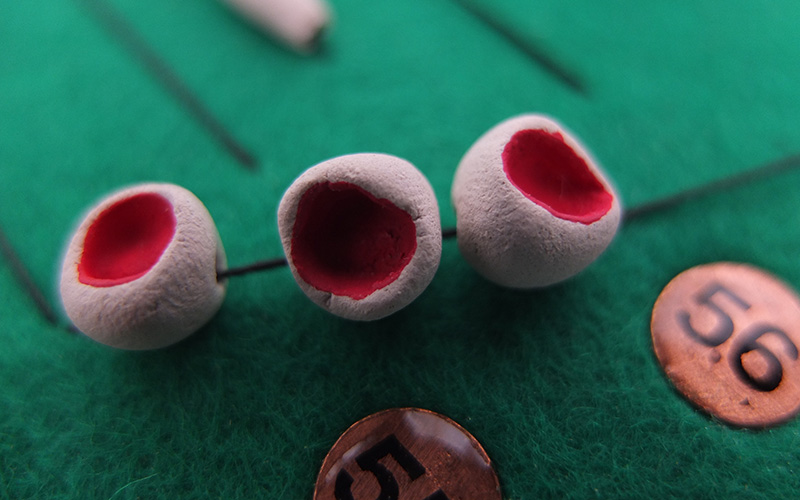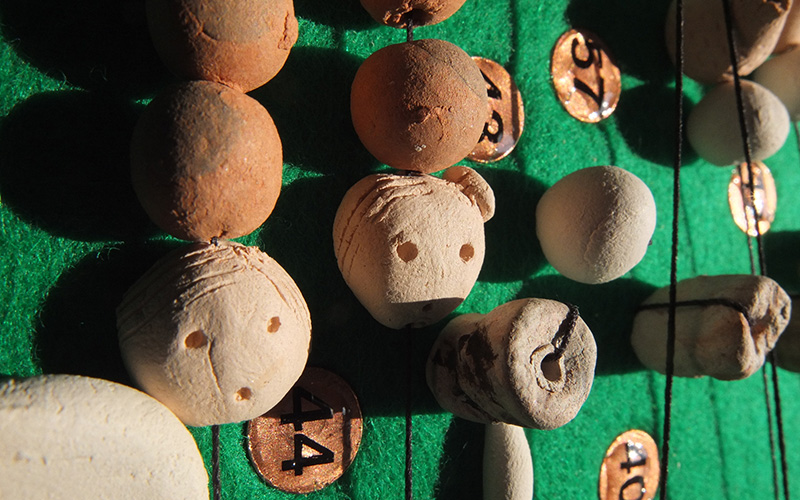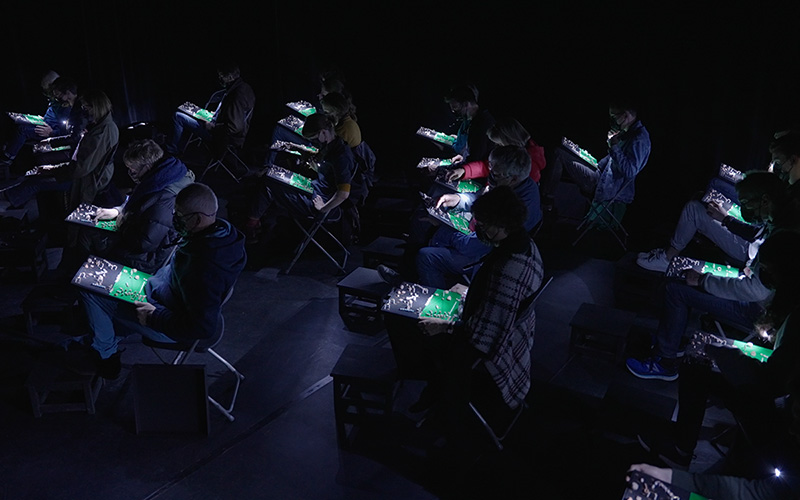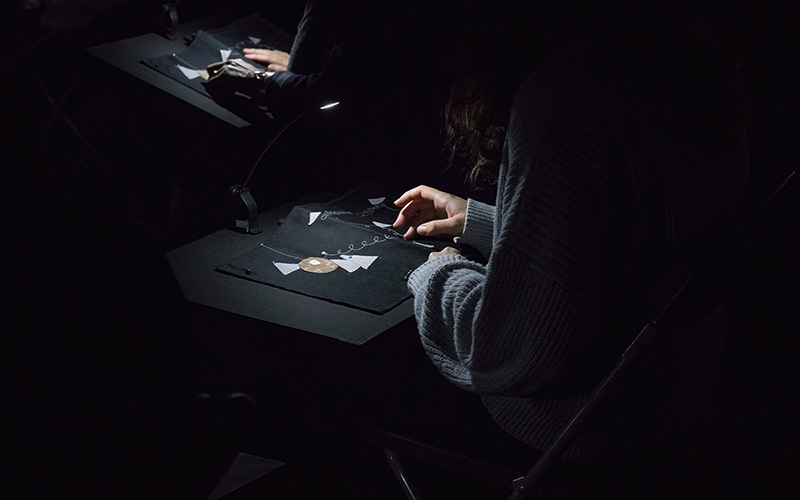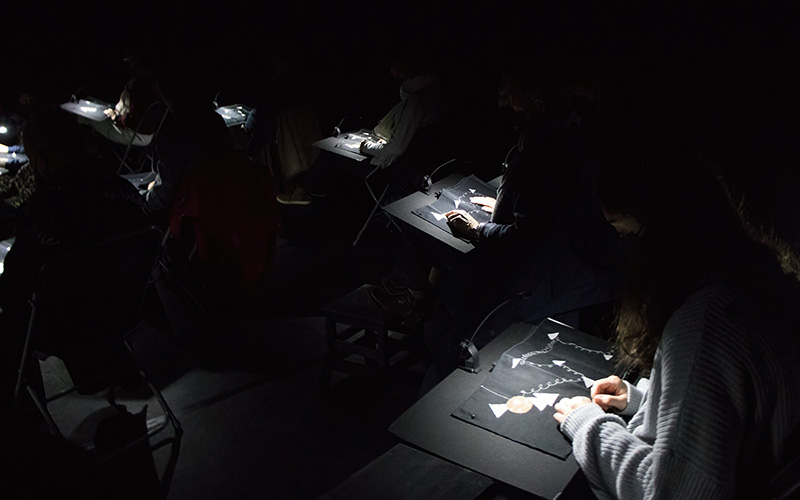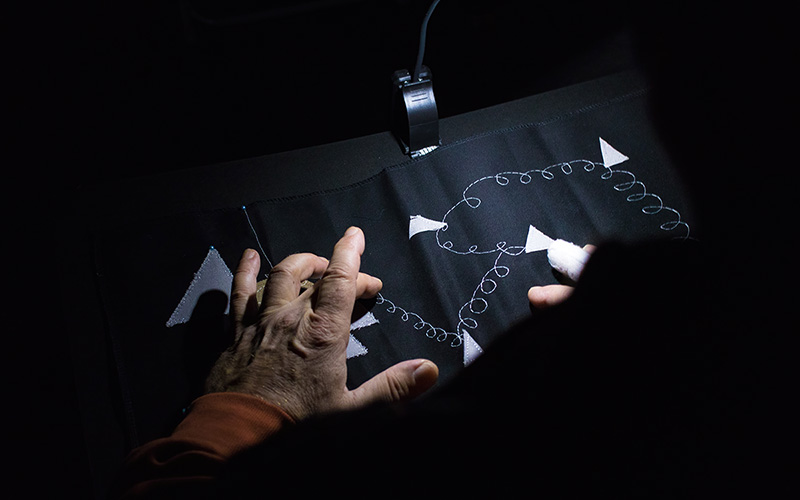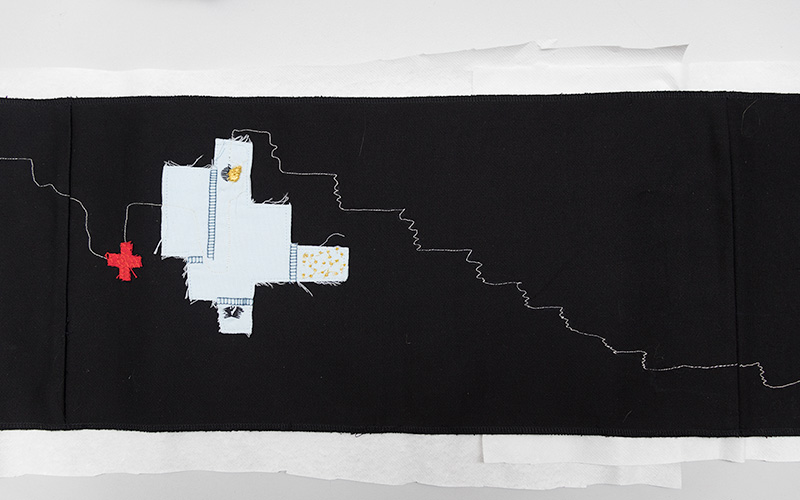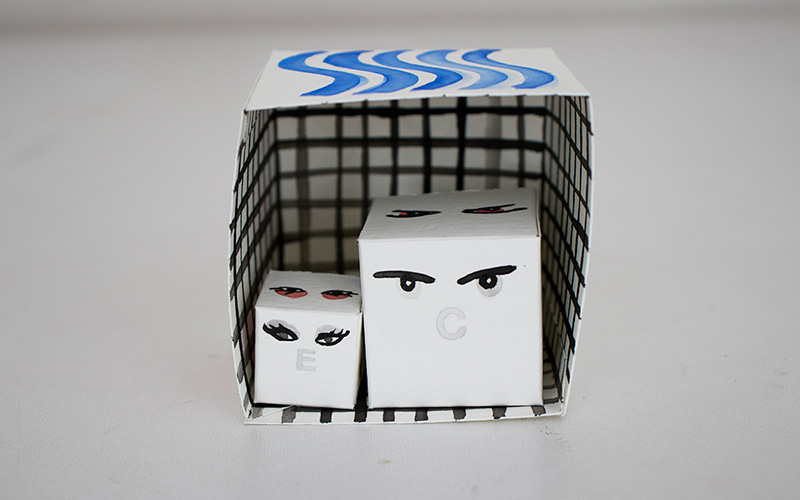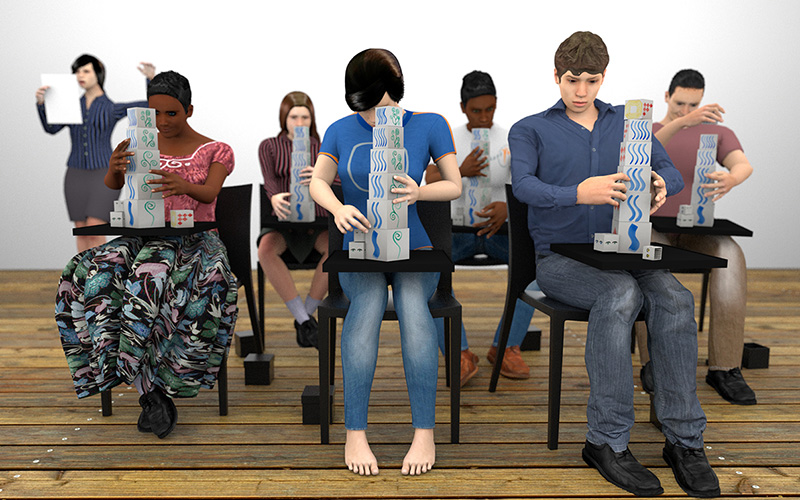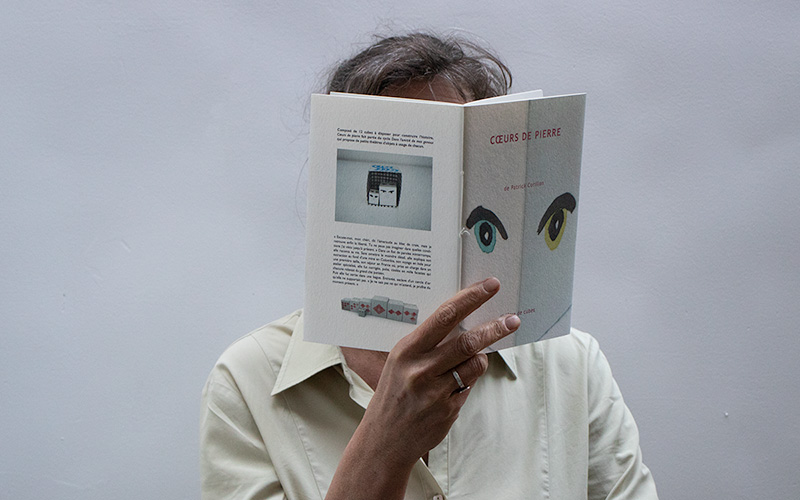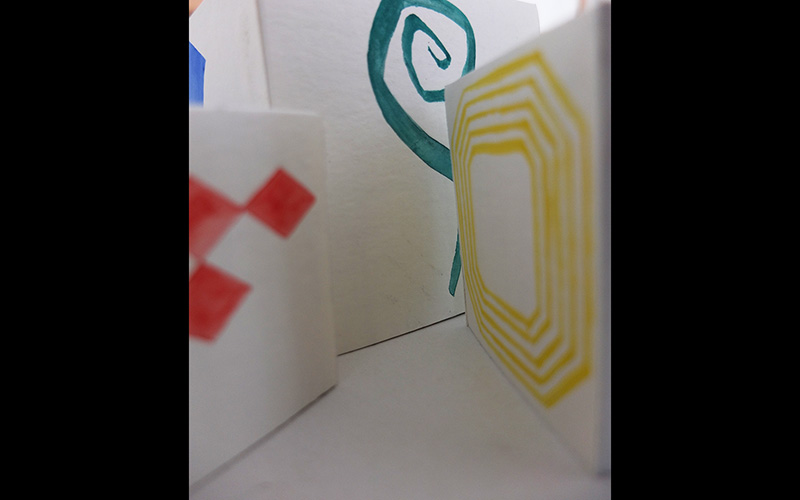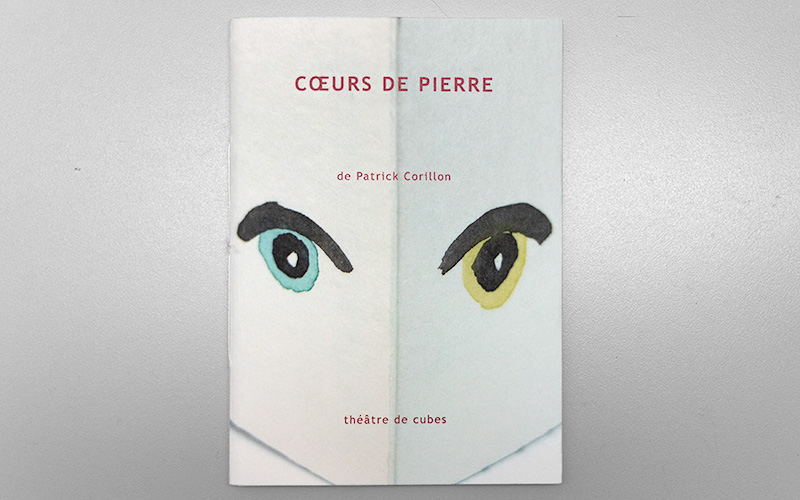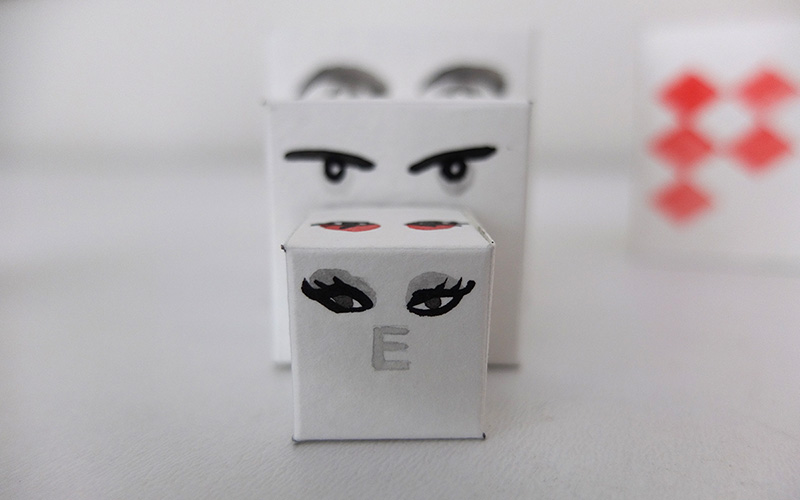In the friendship of my knees
In the friendship of my knees is an intimate sensory experience that immerses spectators in a story of which they themselves become the protagonists.
This project aims to develop an imaginary world around a landscape, whether real, literary, mythological, belonging to the past or conceivable in the future. The key question is: how to appropriate our landscapes physically and poetically, to feel like a real protagonist within them in order to project ourselves into an environmental and climatic future that is not lost beforehand but envisaged as a playground open to all possibilities.
In the friendship of my knees is composed of four distinct 30-minute stories, intended for an audience of up to 100 people.
A narrator tells of odysseys in shattered landscapes that each spectator animates with their own hands, using a game board placed on their knees. As the stories unfold, landscapes are created out of cubes that the spectators assemble, beads that they slide, fabrics that they unroll and unthread, and discs that are made to turn.
Everyone has a companion in life. This someone really exists; he or she lives on the exact opposite side of the earth and is our counterbalance. If we go one way, they go another. We keep ourselves in balance. Sometimes we lead, because our will is stronger than theirs, sometimes they lead. We perceive them as shadows, and they must see us that way too. But we are both real. It is the person who is closest to us, and the only one we will never meet.
‘My life is just an illusion’, said the mole to the worm. ‘Everything I want to hold close to me slips out of my hands. You wouldn’t understand because you don’t have arms; but you see, with us moles, it’s as if our arms had been placed the wrong way: the left where the right should be and vice versa. Whenever we try to grab something, our hands push it aside. At the same time, it is this movement that helps us go forward. We go in search of something we will never be able to obtain.’
Continuing his reading, the small heap of bones was plesantly surprised to stumble upon a study on the links between eagles and the remains of their meals. Golden eagles can spend an inordinate amount of time contemplating the bones of their last meal. Perhaps this form of meditation allows them to be calm in the face of death, which is always hovering over them. ‘Death, always death! What is this thing that fascinates everyone but me?’ said the heap of bones, exasperated, although he took great pride in knowing that he was worthy of so much attention from the lords of the sky.
‘Excuse me, darling’, said the emerald to the block of chalk, ‘but I am finally free again. You can’t imagine the conditions I’ve been living in until now.’ In an uninterrupted stream of words, the emerald tells her life story. Without leaving out any details, it described its extraction from the bottom of a mine in Colombia, its trip to India for a first cut, and its stay in France, where, treated in a specialized workshop, it was corrected, polished and cut into a thousand facets, each reflecting the great Parisian style.
Then, she was set in a ring. Shackled, the slave of a gold ring she could not bear. ‘I don't know what the future holds, I'm just enjoying the moment.’
The landscape eyes
The endless landscape
